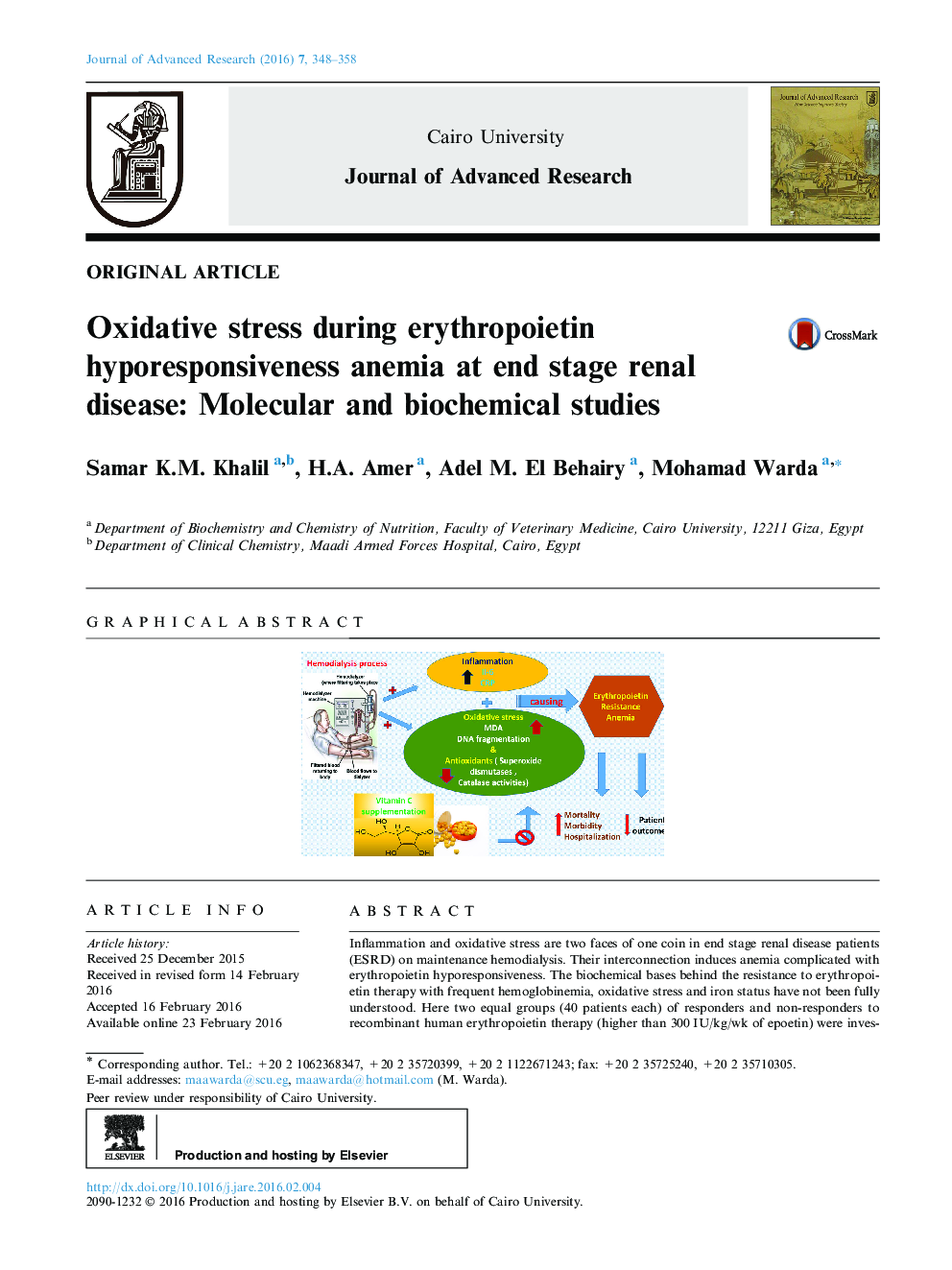| کد مقاله | کد نشریه | سال انتشار | مقاله انگلیسی | نسخه تمام متن |
|---|---|---|---|---|
| 826047 | 907900 | 2016 | 11 صفحه PDF | دانلود رایگان |
Inflammation and oxidative stress are two faces of one coin in end stage renal disease patients (ESRD) on maintenance hemodialysis. Their interconnection induces anemia complicated with erythropoietin hyporesponsiveness. The biochemical bases behind the resistance to erythropoietin therapy with frequent hemoglobinemia, oxidative stress and iron status have not been fully understood. Here two equal groups (40 patients each) of responders and non-responders to recombinant human erythropoietin therapy (higher than 300 IU/kg/wk of epoetin) were investigated. Hematological and biochemical analyses of collected blood and serum samples were performed along with serum electrophoretic protein footprinting. The leukocytic DNA fragmentation was used to evaluate the degree of oxidative insult. The good responders showed lower erythrocyte malondialdehyde (E-MDA) level and less DNA fragmentation of circulating leukocytes than poor responders with elevated hemoglobin, albumin, A/G ratio, total iron, and ferritin levels. Contrariwise, lower erythrocyte superoxide dismutase (E-SOD) and catalase activities in EPO poor responder group were noticed. Neither other serum constituents nor electrophoretic protein pattern showed any difference between the two groups. There were higher levels of inflammatory markers, interleukin-6 (IL6) and C-reactive protein (CRP) in EPO poor responder than good responder. The negative correlations between Hb and both IL6 and CRP levels in the present data remotely indicate a positive correlation between inflammatory markers and severity of anemia. A direct correlation between Hb and antioxidant enzymes (E-SOD and catalase) was noticed, while inverse correlation with E-MDA was recorded. The study proved that oral supplementation of vitamin C to ESRD patients might mitigate the previously elevated serum MDA level in these patients.
Figure optionsDownload as PowerPoint slide
Journal: Journal of Advanced Research - Volume 7, Issue 3, May 2016, Pages 348–358
